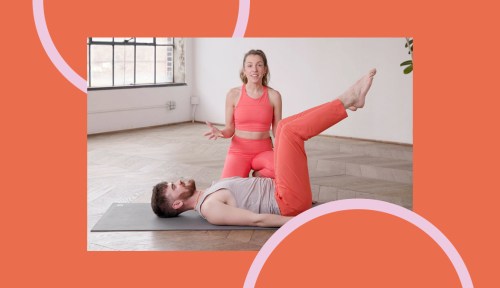How To Make Table Top Legs the Sturdy Base Your Pilates Practice Needs To Thrive
Small adjustments to Pilates table top legs will mean big improvements in your whole Pilates practice, according to Chloe de Winter.

Activating your core is the key to so many Pilates moves, but actually finding and firing those core muscles can feel like you’re searching for something when you don’t even know what it looks like.
Experts in This Article
physiotherapist, master Pilates instructor, and founder of Go Chlo Pilates
But there’s a simple way to set up your Pilates routine for success, and that’s by getting back to basics. Namely, by doing Pilates table top legs the right way.
“It may not look like much,” Go Chlo Pilates founder Chloe de Winter says. However, “when you do your Pilates table top correctly, you feel so much great activation through your core muscles and through your abdominal muscles, and it feels great.”
Not to be confused with table top position in yoga where you’re on your hands and knees, Pilates table top legs involves lying on your back, with your legs in the air above your hips, and knees bent at a 90-degree angle. It’s the starting point for so many Pilates moves, like leg and arm taps and extensions, roll-ups, and more.
De Winter says the move is “simple” but deceptively tricky since there are several ways to go wrong. “Small adjustments are really going to make you feel so much better and so much stronger in your table tops,” she says. Here are her big three pieces of advice:
1. Find a neutral spine
To get that core activation, you’ll want to make sure your lower back is in that Goldilocks position: Not over-arched, and not too flattened, but just with a small curve. De Winter says to imagine creating enough space for a blueberry underneath the small of your back, and then lift up through the front of your core (not by arching your back more).
2. Align knees over hips
You can also ensure good form and activation by keeping your knees above your hips, not extended too far away or tucked in too close.
3. Don’t tense up your shoulders
Finally, keep your head, neck and shoulders relaxed. The work should be coming from your core, not a strained upper body.
If you follow these three tips, your table top—and your Pilates practice—are sure to be sturdy and supportive.
Sign Up for Our Daily Newsletter
Get all the latest in wellness, trends, food, fitness, beauty, and more delivered right to your inbox.
Got it, you've been added to our email list.










